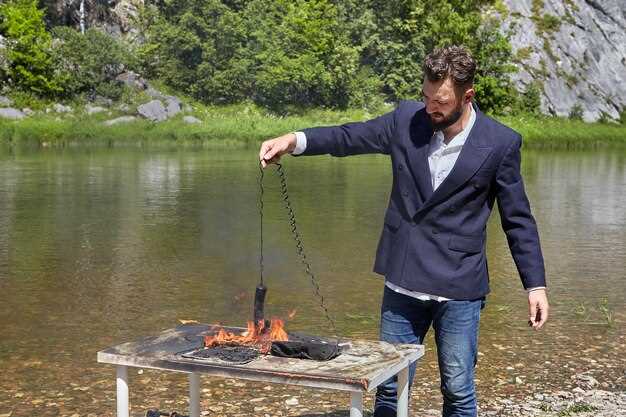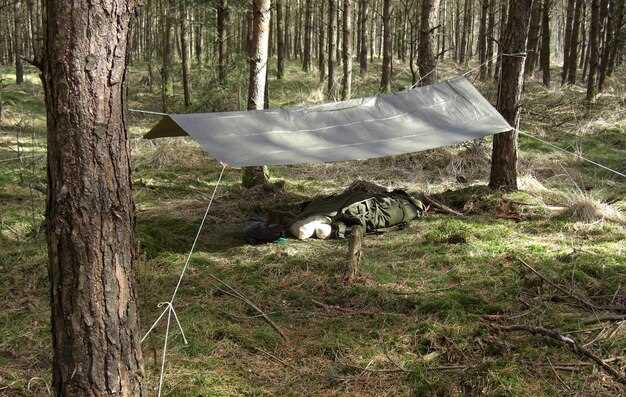
How to set up a ground blind properly

Setting up a ground blind is a crucial element of successful hunting that can significantly enhance your chances of landing the big game. When done correctly, a blind not only camouflages the hunter but also provides a strategic vantage point for observing wildlife. The effectiveness of your hunting efforts largely depends on how well you position your ground blind, taking into account various environmental factors and animal behavior.
Choosing the right location is the first step in establishing a successful ground blind setup. Look for areas with high wildlife traffic, such as trails, feeding spots, or water sources. Consider wind direction and how it may affect scent dispersal, as well as the natural landscape, which can offer additional concealment. By carefully selecting your spot, you can improve your chances of a fruitful hunting experience.
Once you have identified the perfect location, it is essential to pay attention to the blind’s placement. Ensure that it blends seamlessly with the surrounding environment, utilizing natural elements like bushes and trees for added cover. Additionally, the orientation of the blind should consider the typical movement patterns of the game you are pursuing, providing optimal shooting angles and minimizing noise disruptions.
Choosing the Right Location for Your Ground Blind
Selecting the ideal location for your ground blind is crucial for a successful hunting experience. The right placement can significantly impact visibility, scent control, and animal movement. Begin by observing the area for signs of animal activity, such as tracks, droppings, and feeding signs. These indicators will help you understand animal patterns and identify high-traffic zones.
Consider setting up your blind near natural cover, such as trees, bushes, or terrain changes, which provide additional concealment. This not only helps to hide your silhouette but also enhances your chances of remaining undetected. Position your blind downwind of the anticipated travel route to minimize scent detection, ensuring that your presence does not spook game.
Analyze the sun’s trajectory during your hunting times. Ideally, set up your blind to avoid direct sunlight that could cause glare or overheating, while also allowing for optimal shooting angles. Take note of the wind patterns and ensure that your location offers some degree of protection from prevailing winds, which can carry your scent to animals.
Additionally, consider the distance to key points, such as water sources, bedding areas, and feeding zones. The location should strike a balance between proximity to these areas and the time required for animals to feel comfortable approaching your blind. A well-chosen site not only enhances the effectiveness of your ground blind setup but also increases your chances of a successful hunt.
Optimal Camouflage Techniques for Your Hunting Blind

Camouflaging your hunting blind is essential for successful setup and effective hunting. The right techniques help you blend into the surrounding environment, making it difficult for wildlife to detect your presence. Consider the following methods to enhance your blind’s camouflage.
First, choose the appropriate colors and patterns that match the terrain. If you’re hunting in a forest, opt for earthy tones like browns and greens, while open fields may require tan or lighter shades. Utilize materials with natural patterns to mimic the texture of foliage, bark, or grass. This helps your blind merge seamlessly with the landscape.
Next, incorporate natural elements. Using branches, leaves, or grass to cover your blind enhances its disguise. Attach these materials directly to the blind to break up its outline and create a more organic shape. Ensure that you place these elements in a way that matches the local flora, adding authenticity to your setup.
Consider the placement of your blind in relation to the sun and prevailing winds. Position your blind so that it faces into the wind, minimizing scents that might alert animals. Additionally, placing your blind in areas with natural cover–such as behind trees or hills–can further conceal it from view.
Using specialized camouflage netting is another effective tactic. These nets can be draped over your blind to improve its disguise. Choose netting that resembles the local vegetation, and make sure to fold or hang it loosely to create dimension, mimicking the natural surroundings.
Finally, avoid movement and noise when you’re inside the blind. This is crucial for maintaining concealment. Use silent materials for your hunting gear and practice stillness, ensuring that your blind setup remains effective throughout your hunting session.
Setting Up for Comfort and Accessibility in Your Blind

Creating an effective setup in your hunting blind is essential for an enjoyable and successful experience. Comfort and accessibility are key factors that can enhance your time spent in the field. Here are some practical tips to ensure your blind is optimized for both:
- Choose the Right Location:
- Position the blind in a spot with good visibility.
- Ensure it’s close to food or water sources.
- Avoid areas with heavy wind or noise interference.
- Create Comfortable Seating:
- Invest in high-quality, portable chairs with back support.
- Consider using seat cushions for extra comfort.
- Ensure your seating arrangement allows for easy movement and shooting angles.
- Organize Your Gear:
- Use storage bags or boxes to keep equipment organized.
- Place frequently used items within reach.
- Implement a system for quick access to calls, binoculars, and other necessities.
- Maintain Proper Ventilation:
- Choose a blind with adequate openings for airflow.
- Avoid overcrowding the blind to prevent overheating.
- Use portable fans or battery-operated options to improve airflow if needed.
- Enhance Lighting:
- Incorporate battery-powered lanterns or LED lights for early morning or late evening hunts.
- Ensure that lighting is directed away from potential game paths.
- Consider light-diffusing materials to reduce glare.
- Plan for Accessibility:
- Ensure the blind is easily accessible, especially in adverse weather conditions.
- Create pathways free from obstacles leading to and from the blind.
- Keep all gear stored neatly to minimize movement required during critical hunting periods.
By focusing on comfort and accessibility, you can create a blind setup that allows you to stay alert and focused on your hunt, significantly increasing your chances of success.




